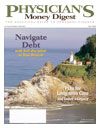Avoid the Hullabaloo of a Noise Investment
Dr. Bill Moller's investment portfolio has averagedover 12.94% per year for the past 2years, but last week he marched into hisfinancial planner's office upset because he felt hecould never retire. "I'm guessing I have 5 years ofprofessional shelf life left, only I can't retire withthose returns,"Dr. Moller declared.
Investment Uproar
Dr. Moller is a cardiologist who would neverapproach a surgery without quantifying the risks,comparing procedures, and having a tactical plan.Yet when it comes to investing, he listens to advicethe same way he listens to nightly news. Toutinghighly advertised investment performance is what Icall "noise."Noise is anything that obscures orreduces the clarity of a process, made up of irrelevantor meaningless data. Unfortunately, the vast majorityof individuals who are looking for fast-fix strategiesgive credence to noise without even knowing it.
Noise is really akin to investment talk radio: It getsconsumers excited and confused. Not surprisingly,when emotions become part of the mix, doctors areespecially prone to making poor investment decisions.In Dr. Moller's case, a stockbroker showed himan investment that provided a 50% return last year.What Dr. Moller didn't see in the recommendedinvestment is an unallocated single position that alsopaid the broker an extra incentive, because it is oneof the brokerage firm's proprietary products. Dr.Moller's well-allocated and conservative 12.94%yearly average actually had a higher compound rateof return than the stockbroker's noise investment.The doctor's portfolio was a conservative strategythat had a compound average of 12.94% in each ofthe 2 consecutive years, so his average annual returnwas, indeed, "only"12.94%.
Silence Is Golden
What the broker didn't show was an apples-to-applescomparison of the two choices. If the brokerdid, Dr. Moller would have discovered the noiseinvestment was down 50% 2 years ago, then camecharging back with an impressive 100% return. Whatthat means is if Dr. Moller had invested $100,000 inthe noise investment in 2004, it would have ended upbeing worth $50,000. When it doubled in 2005, Dr.Moller would have been right back where he startedwith $100,000. Meanwhile, his conservative strategyactually made him a real return. At the end of the same2-year period, Dr. Moller's balance was $125,880, asopposed to the $100,000 he would have ended upwith if he had been in the more volatile investment. Itjust goes to show that when it comes to sound investing,most of the time it's better to stay silent and keepsteady instead of making a lot of noise.
Jim Lunney is a certified financial and estate planner located in
Littleton, Colo. He welcomes questions or comments at 800-800-
6364, james.lunney@lpl.com, or visit www.lpl.com/james.lunney.
Securities offered through Linsco/Private Ledger member SIPC.
The name of the person mentioned in the above example has been changed.
